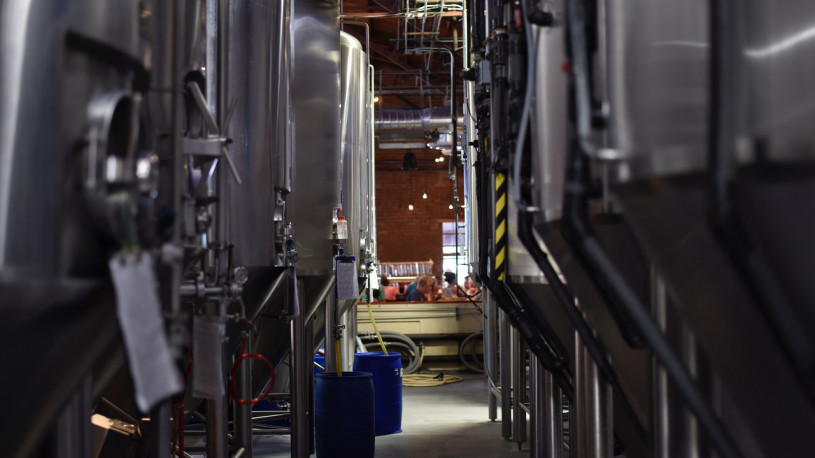-
Is Excessive Bureaucracy Delaying New Chemical Products going to Market Excessively?
 Continue Reading
Continue ReadingWith many parts of the world experiencing new legislation on chemicals, there is growing concern among chemical industry leaders over the challenges that the new bureaucracy is causing, with many beginning to count the cost of delays in bringing new chemical products to market. This has recently lead to Socma (the Society of Chemical Manufacturers and Affiliates) voicing its fears over the updated procedure for reviewing new chemical products, and to speak out over the way the red tape is impacting chemical producers’ ability to make products available to customers.
Commenting on the implementation of the Lautenberg Chemical Safety Act, which passed into American law in June 2016, Kelly Franklin, North American Editor at the industry journal Chemical Watch notes that, “Under the new law, the EPA (US Environmental Protection Agency) must now make an ‘affirmative finding’ of safety before a new substance is allowed on the market. If the agency decides a substance poses an unreasonable risk, it must issue an order to prohibit or restrict it.”
The number of new chemical products requiring EPA review is estimated to be around 1,000 per year, and these reviews are not necessarily small. This is because, to make an ‘affirmative finding’ means calculating the effects of all ‘reasonable foreseen’ uses. This in turn, may require the EPA to order a ‘section 5(e)’.
This part of the law requires that chemical producers provide sufficient information of the new product, so that it may assess the chemical product on the following criteria:
- Testing for toxicity or environmental fate once a certain production volume or time period is reached
- Use of worker personal protective equipment
- New Chemical Exposure Limits (NCELs) for worker protection
- Hazard communication language
- Distribution and use restrictions
- Restrictions on releases to water, air and/or land, and
- Recordkeeping.
All of which takes time. As Chemical Watch noted when it reported of one example where a chemical manufacturer, “… has a pending case that is in a mixture, and one of the major components of this is already on the TSCA inventory and is what contributes to the hazards.”
Under the new law, despite the fact that the chemical has previously been passed by the EPA, its use in a new product requires a full review, adding to the delay, and creating a backlog of chemicals needing to go market but awaiting permission to do so. The significance of which was outlined by Dan Newton, Senior Manager of Government Relations at Socma, when he explained how, “Timely access to market is very important, especially for batch manufacturers who make chemicals on demand.”
Furthermore, whilst this backlog for new products impacts businesses, calls are being made to implement the wholesale review of all chemicals listed on the US market. As Richard Denison, of the EDF (Environmental Defence Fund) writes on the non-profit organisation’s website, “A key reform under the Lautenberg Act is the requirement that the EPA generate an accurate, up-to-date list of all chemicals in active commerce. This is to be accomplished by enforcing a rule to do a full ‘reset’ of the TSCA Inventory [some 85,000 chemical products] that distinguishes between active and inactive chemicals.”
The total cost of implementing the newly enacted Lautenberg Chemical Safety Act has been estimated at $100 million. Some of this will be paid by the chemical industry, and as such may have a negative impact on innovation, especially for smaller chemical companies.
As Newton explains, “As EPA continues to implement the new TSCA, much of how its success or failure will depend on resources and how they are allocated. Some of the resources will come from industry. Twenty-five percent, or $25 million of program costs, whichever is the lower, will come from industry.
This creates somewhat of a dilemma. If EPA puts too much focus on section 5 new chemicals and attempts to get smaller businesses to foot more of the bill, innovation could be negatively impacted. We could see a significant decline in the number of new chemicals introduced, particularly by smaller companies.”
As the current trend of tightening industrial chemical regulations reaches its climax, with the EU’s REACH laws, the Korean Act on the Registration and Evaluation of Chemicals (K-REACH), China’s Existing Chemical Inventory (IECSC) and the US’s TSCA, all now passed into law (with more countries following suit), it will take time for chemical companies and the industry as a whole to measure the economic impact of the extra red tape.
But with economic stagnation a reality in Europe and Japan, and a threat in North America and even Asia, governments are becoming increasingly aware of the importance of the chemical industry to the global economy. As such, how long will it take before a review of the legislation and its impact will take place?
Every time a new law is introduced, there is a risk that part of it will not be effective or helpful. What sounds good in a government committee room or looks good in a white paper, does not always implement well in the real world.
So, when all the dust settles from the recent tsunami of law changes, and when all the analysis of the impact of chemical products is over, will anyone from government be free to test the impact of the law on the health of the chemical industry?
Photo credit: www.msdsonline.com
-
How to Turn Brewery Wastewater into Battery Material
 Continue Reading
Continue ReadingChemical researchers at the University of Colorado in Boulder have found that wastewater from the beer brewing process can provide an environment for the carbon-based materials needed to make energy storage cells. In doing so, they have potentially solved two problems; they have discovered an environmentally friendly and economic source of battery feedstock for electrodes, and they have also found a use for a waste product that breweries pay to throw away.
As Tyler Huggins, a graduate student in CU Boulder’s Department of Civil, Environmental and Architectural Engineering and lead author of the new study says, “Breweries use about seven barrels of water for every barrel of beer produced, and they can’t just dump it into the sewer because it requires extra filtration.”
The method for producing the material is based on using the wastewater as an environment for growing a fungus that can then be baked dry to produce a “a freestanding biomass-derived lithium-ion anode.”
The advantages of this process are made clear on the University website, which explains that, “…researchers utilized the unsurpassed efficiency of biological systems to produce sophisticated structures and unique chemistries by cultivating a fast-growing fungus, Neurospora crassa, in the sugar-rich wastewater produced by breweries.
‘The wastewater is ideal for our fungus to flourish in, so we are happy to take it,’ said Huggins.
By cultivating their feedstock in wastewater, the researchers were able to better dictate the fungus’s chemical and physical processes from the start. They thereby created one of the most efficient naturally-derived lithium-ion battery electrodes known to date while cleaning the wastewater in the process.”
More scientifically, the researchers have reported their findings in the American Chemical Society journal Applied Materials & Interfaces, as follows, “the carbon/nitrogen ratio of [the fungus] Neurospora crassa mycelia mats was shifted by 5-fold while generating cobalt nanoparticles into the hyphal structure originating from macroconidia spores. This shift was achieved through nitrate limitation and equal molar concentrations of Mg2+ and Co2+ in the growth media. The resulting mycelia mat was converted via a high-temperature pyrolysis process (800 °C) to produce a freestanding cobalt and nitrogen codoped electrode material with no postmodification. Ultimately, nitrogen doping resulted in one of the highest recorded specific reversible capacity for a freestanding biomass-derived lithium-ion anode (400 mAh g–1 at C/10). We observed an additional improvement in capacity to 425 mAh g–1 with the incorporation of 3 wt % Co. Our results show how shaping the chemical characteristics of an electrode during the growth of the biotemplate allows for sustainable carbon-based material manufacturing from a living (self-assembled) material.”
You can see more about this development on the YouTube clip here.
Not only does the new method solve the problem of brewery waste and the sourcing of battery feedstock, but it is also adding weight to the industrial bio-chemical movement. By showing how such natural products as beer wastewater and fungi can provide a useful chemical feedstock for industry, the researchers have proven the advantage of analysing chemical processing problems from a different perspective.
As Zhiyong Jason Ren, an associate professor in CU Boulder’s Department of Civil, Environmental and Architectural Engineering and a co-author of the new study explains, “The novelty of our process is changing the manufacturing process from top-down to bottom-up. We’re biodesigning the materials right from the start.”
Moving forward, the researchers have filed a patent for the process, and hope to make a commercial success of the battery manufacturing method. Indeed, the team have already founded a partnership with Avery Brewing in Boulder, with a view to starting a larger pilot program for the technology.
Certainly the team are optimistic that they have found a winning economic formula, with Huggins declaring, “We see large potential for scaling because there’s nothing required in this process that isn’t already available.”
Photo credit: American Chemical Society
Photo credit: IPAhub
-
Industrial Scale 1,4 Butanediol from Sugar is now a Reality
 Continue Reading
Continue ReadingSeptember 30th 2016 saw the official opening of the world’s first industrial bio-butanediol plant. With a feedstock based directly on sugars that are broken down by bacteria, the development marks a major step in providing an alternative to fossil fuel chemical feedstock.
Better still, the original plan was to produce 18,000 tonnes per annum capacity has been increased to 30,000 tonnes as demand for renewable polymer materials grows. Currently production is focused on producing wrapping films for fruit and vegetables that, like the products they protect, are both biodegradable and compostable. The plant will also produce 1,4 BDO for the manufacturing of coffee capsules, although the facility will produce polymer feedstock for numerous plastic products.
The new plant is run by the company Mater-Biotech, which in turn is 100% owned by Novamont, and expects to reach full production some time in 2017.
The opening was announced in a Novamont press release that explained how the plant, “Represents an investment of over €100 million. The Mater-Biotech plant in Bottrighe [70km south of Venice] will be the world’s first industrial plant dedicated to the production of bio-butanediol (BDO). It will produce 30,000 tonnes/year of low-impact BDO, with savings of more than 50% in terms of CO2 emissions, thus helping achieve a ‘low carbon society’.”
The plant was designed in collaboration with the California based firm Genomatica, which rightly boasts on its website how, “The new BDO plant uses Genomatica’s GENO BDO™ process technology to convert sugars to BDO. Genomatica’s licensed technology enables production of a bio-BDO that can be used the same way as conventional, while delivering better economics and sustainability.”
You can see more of the new plant on this YouTube video here.
It also seems that this plant will be just the first of many, as the GreenChemicalsBlog website reports that, “BASF also has a licensing deal with Genomatica for its bio-BDO process, with the potential to build up to 75 ktpa commercial plants that can be based on dextrose or sucrose for feedstock. BASF’s license agreement with Genomatica includes production of bio-BDO in North America and certain countries in Southeast Asia.”
Currently, global demand for butanediol is 1.5 million tonnes per year (with a value of €3.5 billion), but as demand for solvents, polyurethanes, polymers and plastic grows then demand for butanediol is expected to reach as much as 2.7 million by 2020. With a value of €6.5 billion, this enormous market growth may well see a similar growth in bio-butanediol facilities.
Photo credit: Novomont

